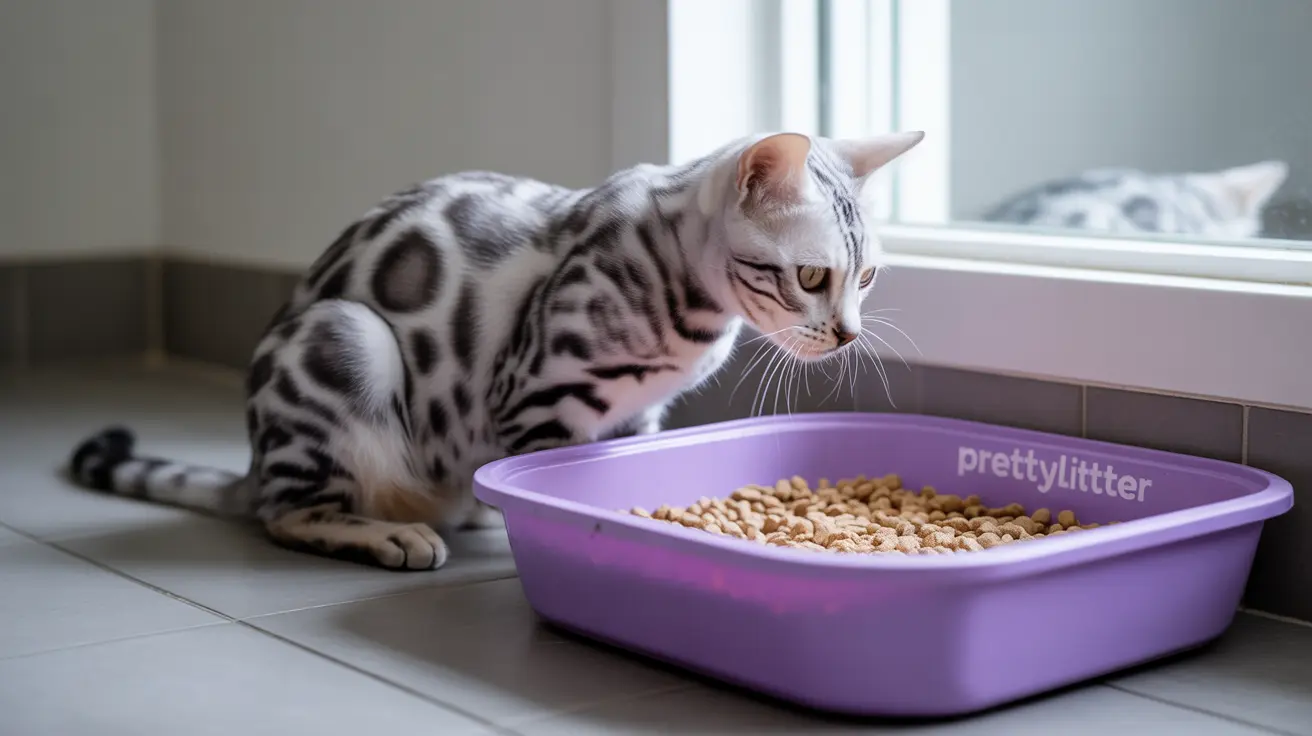Introduction
The PrettyLitter color chart serves as a valuable tool for cat owners seeking to monitor their pet's health through innovative litter technology. This revolutionary silica-based cat litter changes color based on your cat's urine chemistry, potentially alerting you to health issues before they become severe complications.
Understanding how to interpret these color changes can provide crucial early warnings about your cat's well-being, particularly regarding urinary tract health, kidney function, and other metabolic conditions. Let's explore what each color means and how to use this information effectively.
How PrettyLitter's Color-Changing Technology Works
PrettyLitter uses advanced silica crystals infused with pH-sensitive indicators that react to your cat's urine chemistry. These specially designed crystals don't just absorb waste and control odors – they actively monitor your cat's health by changing colors in response to various chemical markers in the urine.
The Science Behind the Colors
When your cat uses PrettyLitter, the crystals interact with specific components in the urine, including pH levels and blood presence. This interaction triggers visible color changes that correspond to different health indicators:
- Dark yellow or olive green indicates normal pH levels
- Blue signifies alkaline conditions
- Orange shows acidic conditions
- Red suggests the presence of blood
Interpreting PrettyLitter Color Changes
Normal Range (Dark Yellow/Olive Green)
When you see dark yellow or olive green coloration, this indicates your cat's urine pH falls within the normal range of 6.0-6.5. This is exactly what you want to see during routine daily monitoring.
Blue Coloration (High pH/Alkaline)
Blue crystals signal increased alkalinity in your cat's urine, which could indicate:
- Urinary tract infections (UTIs)
- Risk of struvite crystal formation
- Potential bladder inflammation
Orange Coloration (Low pH/Acidic)
Orange crystals indicate increased acidity, which may suggest:
- Metabolic acidosis
- Kidney tubular acidosis
- Risk of calcium oxalate crystal formation
- Possible kidney dysfunction
Red Coloration (Blood Detection)
Red crystals are perhaps the most concerning as they indicate blood in the urine, which could signal:
- Bladder inflammation
- Urinary stones or crystals
- Feline Lower Urinary Tract Disease (FLUTD)
- In rare cases, bladder cancer
Best Practices for Monitoring
To maximize the effectiveness of PrettyLitter's color monitoring system:
- Check the litter color daily
- Document any changes that persist beyond 24 hours
- Take photos of concerning color changes to show your veterinarian
- Don't wait for additional symptoms if you notice consistent abnormal colors
When to Contact Your Veterinarian
While PrettyLitter provides valuable health insights, it's not a diagnostic tool. Contact your veterinarian immediately if you observe:
- Any color changes lasting more than 24-48 hours
- Red coloration in combination with unusual behavior
- Multiple color changes within a short period
- Any color change accompanied by other symptoms
Frequently Asked Questions
What do the different colors on the PrettyLitter color chart indicate about my cat's health?
Dark yellow/olive green indicates normal health, blue suggests potential UTIs or alkaline conditions, orange signals acidic conditions possibly related to kidney issues, and red indicates the presence of blood in the urine.
How can I use PrettyLitter to detect signs of urinary tract infection or kidney issues in my cat?
Monitor the litter daily for blue coloration (possible UTI) or orange coloration (potential kidney issues). These color changes, especially when persistent, warrant veterinary attention.
Is it normal for PrettyLitter to turn blue or orange, and when should I worry and contact a vet?
Temporary color changes can occur due to diet or stress, but any color change lasting more than 24-48 hours should prompt a veterinary consultation.
Can PrettyLitter detect blood in my cat's urine, and what does red coloration mean?
Yes, PrettyLitter can detect blood in urine, indicated by red coloration. This could signal various conditions from bladder inflammation to more serious issues requiring immediate veterinary attention.
How often should I monitor PrettyLitter's color changes, and how reliable is it for early illness detection?
Monitor PrettyLitter daily for optimal health tracking. While reliable for early detection, it should be used as a screening tool in conjunction with regular veterinary care, not as a diagnostic replacement.
Conclusion
The PrettyLitter color chart provides a valuable early warning system for cat health issues, but it's most effective when used as part of a comprehensive health monitoring strategy. Always combine these observations with regular veterinary check-ups for the best possible care of your feline friend.






